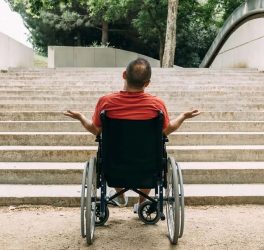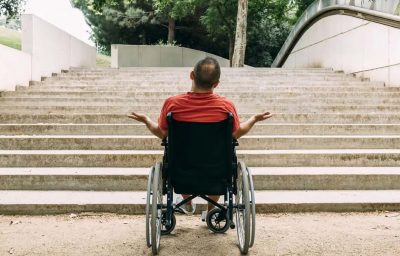
In Somalia, Bakar Ali of the Somali National Association for the Deaf longs to see what children with hearing disabilities of his country are capable of when they are provided access to sign language at an early age.
Through his participation in All Children Reading: A Grand Challenge for Development’s Sign Language Storybook Cohort (SLSC), Ali is gaining the tools, knowledge and resources to lay a foundation for language and literacy learning for deaf children across his country, starting, in part, with producing sign language storybooks.
“Somalia is one of the few countries that still does not have a well-developed sign language,” Ali says. “The Somali Sign Language is still growing, and the SLSC is an opportunity for us to create great storybooks to expose children to reading in sign language, while also preserving local sign language.”
Ali is just one of dozens of participants in the SLSC, which consists of ACR GCD’s Begin With Books prize awardees—eKitabu, Rochester Institute of Technology’s National Technical Institute for the Deaf (RIT/NTID), SIL LEAD, and The Asia Foundation—and their Disabled Persons Organization (DPO) partners. Based on learnings from other Grand Challenges, ACR GCD established the SLSC to provide technical assistance to and engender shared learnings and peer mentoring among the Begin with Books awardees to enable them to develop high quality sign language storybooks.
Since October, SLSC participants have watched a series of on-demand online training sessions on the minimum standards for digital sign language storybook production produced by ACR GCD in collaboration with RIT/NTID. After watching the videos, SLSC participants from around the globe collaborate on the virtual platform Slack to share learnings and resources and ask questions.
“The standards will help sign language storybook creation scale to new locations and new local sign languages, making it easier for DPOs and other organizations to create high quality work,” said Will Clurman, CEO of eKitabu and SLSC participant.
Based on these standards and cohort learnings, ACR GCD will produce a toolkit to provide guidance to organizations and individuals producing sign language storybooks with the hope of spurring the production and broad distribution of high quality storybooks, enabling more inclusive education.
The Asia Foundation, which is creating books in Nepali Sign Language as part of their Begin With Books prize award, said participation in the SLSC is enabling them to adapt their Let’s Read digital library platform for sign language users and create more user-friendly content specifically for children in Nepal. “Having consistent and user-friendly minimum standards will push other content creators to produce higher quality work,” said Melody Zavala, senior director of the Books for Asia initiative at The Asia Foundation. “These standards will also allow for a stronger voice when advocating for children’s content to be created in Nepali Sign Language.”
SIL LEAD, which is creating sign language storybooks in Malian Sign Language through Begin With Books using their ACR GCD prize-winning Bloom software, said the SLSC has facilitated the opportunity to collaborate with and listen to DPOs and others with disabilities in the communities where they work. “We’re not starting at square one, but rather square negative twenty-five,” Hannah Hudson, project support specialist for SIL LEAD, says of their relationship with their DPO partner in Mali, AMASOURDS. “We have to earn their trust and actively fight against the inherent power and privilege we have as hearing people in order to get to a place of open dialogue and understanding of what the deaf community needs.”
RIT/NTID, which is collaborating with ACR GCD in creating the minimum standards and complementary training videos, emphasized that over the long-term, the minimum standards will raise awareness and appreciation of deaf contributions to storytelling, which will in turn spur even higher quality bilingual sign language storybooks for future generations.
“I hope we will continue to work together as collaborators and share resources to reach out to deaf children in remote areas,” said Christopher Kurz, professor at RIT/NTID. “By watching deaf native signers, deaf children will be able to enjoy stories and, in turn, develop literacy. Deaf children will be able to solidify their deaf identity and become fluent in their signed and written languages.”
That sentiment is as true for the countries and languages all SLSC participants are working in as it is for Ali’s work in Somalia. “All children have similar capabilities to read and write, as long as they’re provided access to language at an early age,” he says. “The training has provided me the opportunity to understand how best to develop books according to children’s ability to grasp information, based on their age. I’m so proud to be working on this project.”








